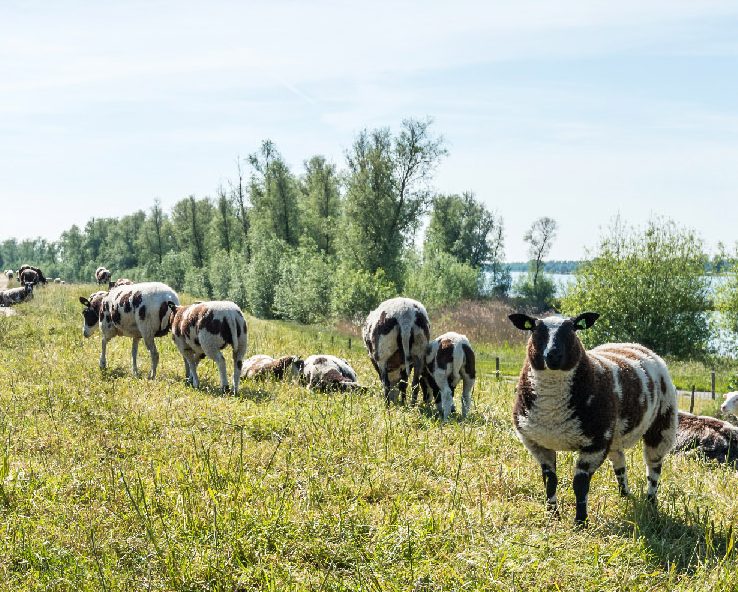Heritage breeds developed over generations and reflect the rich history of livestock. Heritage breeds were bred to keep traits that helped them to adapt to their environment, farming practices, and purpose. Some heritage breeds are currently threatened and facing extinction.
Genetic Traits
Today, heritage livestock breeds today retain many traits that allow them to survive and thrive. Traits that allow them to be self-reliant – from fertility and maternal instincts to foraging and feed consumption, heritage breeds are well-suited for their climate and environment. They also have unique resistance to disease and parasites. This resistance developed from generations of natural selection and contrasts with current commercial breeds that have lost these traits after breeding for productivity and efficiency. While heritage breeds have kept their resistance attributes, they often cannot compare on a production or profitability level. As modern ag has moved toward mass production and uniformity, heritage breeds have dwindled. This is especially true as there is little market for heritage-breed-specific products.
Heritage Breeds
Heritage breeds exist across species, such as Dutch Belted cattle, Arapawa goats, Navajo-Churro sheep, Mulefoot hogs, and Java chickens . These breeds are from all over the world and all periods. Some are endangered and close to extinction. The Livestock Conservancy, an organization dedicated to protecting America’s endangered livestock, has a list of heritage livestock breeds. Lists are divided by North American breeds, breeds imported before 1900, and breeds imported after 1900. It lists the endangered categories: Watch, Threatened, Critical, Recovering, and Study. This list can be found here.
Breed Conservation
Efforts exist to preserve heritage livestock breeds, including organizations dedicated to their preservation, educational initiatives, and breeding programs. The Livestock Conservancy provides microgrants to encourage producers and youth to begin working with heritage breeds. You can learn more about the available grants and how to apply here. Many breeds are best suited for sustainable, grass-based systems, allowing small farms to remain competitive using the “Heritage” label. These breeds also have unique traits, such as diverse fiber, flavorful meat, and robust health traits.
Cultural Context
Heritage livestock breeds are a critical aspect of our cultural heritage. Traditional farming communities have strong connections with their livestock that play an important role in customs, festivals, and traditional ways of life. Knowledge and skill are required to keep them. Preserving these breeds supports the traditional way of life that has sustained our rural communities for centuries.
Resources:
The Livestock Conservancy – Microgrant Program **These grants are currently closed, but check back!
The Livestock Conservancy – Breed Conservation Strategies
The Livestock Conservancy – 2023 Conservation Priority List
Stony Kill Foundation – Heritage Breed Livestock
Graze Against the Machine – An Introduction to Heritage Breed Livestock

